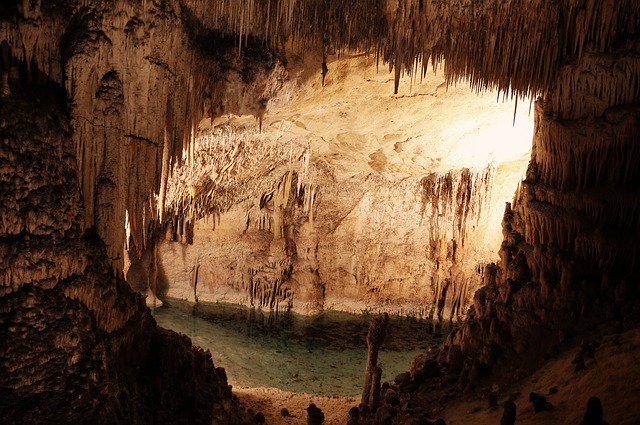
Water circulating in an underground cavern
Underground is that which is located beneath the earth . The term comes from the Latin word subterraneus .
under the ground
For example: "The president tried to hide in an underground shelter but his enemies soon found him" , "The government plans to build an underground tunnel that crosses the river and facilitates the connection of the island with the rest of the national territory" , " They should create underground parking in the downtown area so that motorists have a place to leave their cars .
The underground, in short, develops beneath the ground . If we talk about groundwater , to cite one case, it is that which is located below the earth's surface.
Groundwater
This is a considerable portion of the total mass of water found on the continents . Its depth reaches different levels, depending on the case, since this depends in part on the thickness of the surface , among other factors. Its importance exceeds that of the water that is retained in lakes or that of courses such as rivers.
The volume that the mass of underground water can reach is truly colossal: in the Guaraní Aquifer , for example, a natural reservoir that runs underground through parts of Uruguay, Paraguay, Argentina and Brazil , there are more than one million square kilometers of water. sweet.
The importance of groundwater lies in the fact that it is used to supply one third of the world's population . On the other hand, maintaining it is not easy because it is very sensitive to contamination . Regarding its origin, after rainfall it manages to filter through the soil until it reaches a rock layer that it cannot pass through.
It is believed that groundwater supplies cavities and moves through various galleries, although this does not occur in all cases. Sometimes we find it in the cracks and pores known as interstices , in the sediment or in the rocky substrate, contained as if it were in a large sponge. Soluble rocks, on the other hand, are susceptible to the natural excavation that these circulation routes produce.
Other underground concepts
Underground architecture , meanwhile, takes advantage of climatic conditions for the development of buildings and structures underground. This type of construction can also serve defensive purposes.
An underground stem , on the other hand, is one that grows underground. While aerial stems have nomophiles (traditional leaves), underground stems have cataphylls (modified leaves).
the subway
In Argentina , finally, the metropolitan railway ( metro ) is known as underground or subte . The subway is a railway system whose trains run beneath the surface of a city .
Due to its characteristics, the subway is a very popular means of transportation in large urban areas. It allows people to be transported en masse without hindering vehicular traffic or suffering its consequences. Another of its advantages over the bus or taxi, for example, is its fare, which is usually cheaper or offers special plans through the purchase of passes for several trips.

The metropolitan railway is also called "underground"
Sometimes, the underground is combined with sections of circulation on the surface . Thus these trains can advance below or above the ground depending on the area.
Although the subway has a pre-established route that is impossible to alter, something that could be a disadvantage if none of its stations left us close to our desired destination, thanks to the combinations between different lines it is possible to plan a personalized trip to make the most of the service, paying a single ticket . Furthermore, knowing the route in advance offers greater security to the user because they can plan their trip in time and with peace of mind.
